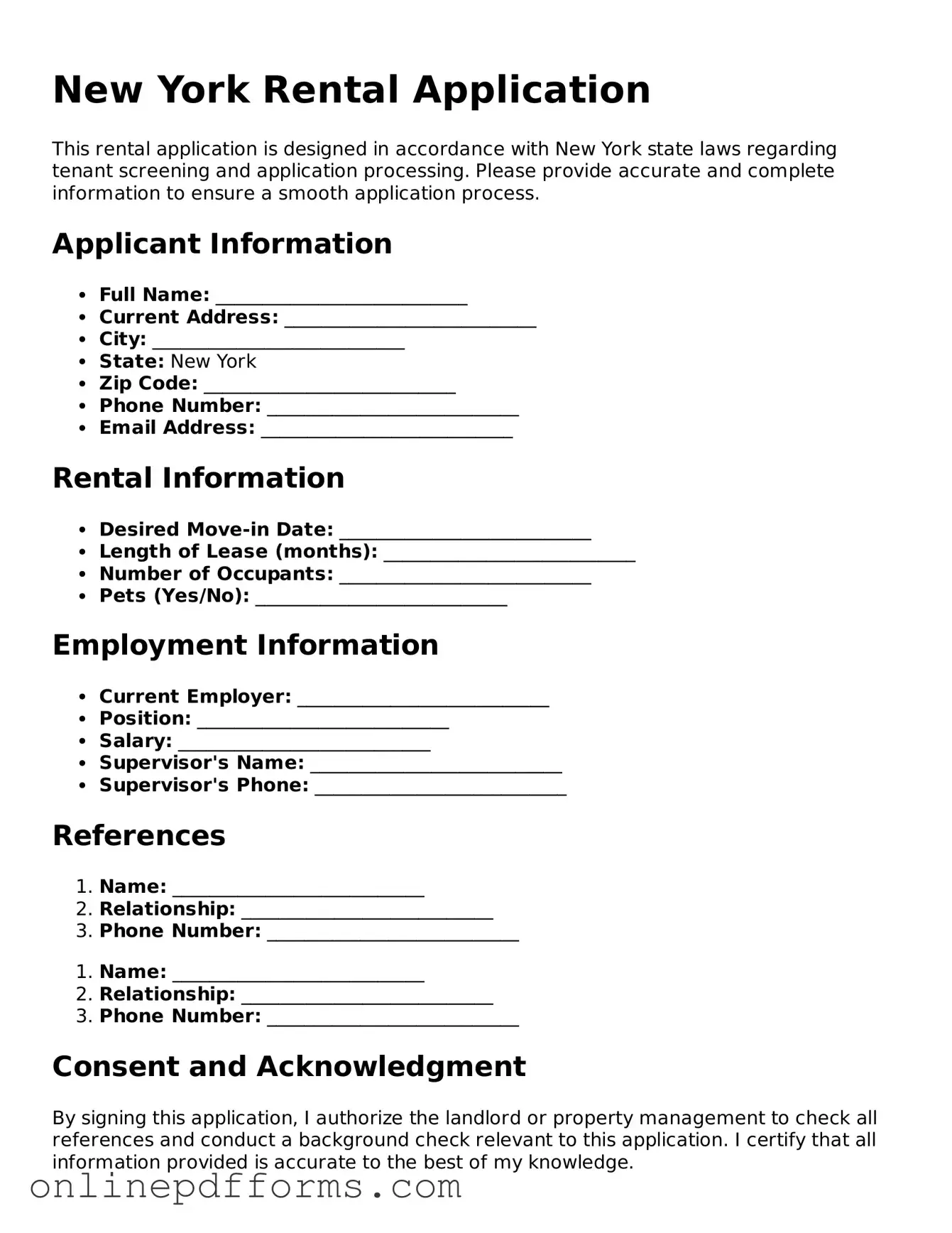The New York Rental Application form shares similarities with the general lease agreement, which outlines the terms and conditions under which a tenant may occupy a rental property. Both documents require personal information from the tenant, such as name, contact details, and rental history. The lease agreement typically includes provisions for rent payment, security deposits, and rules regarding property use, while the rental application serves as a preliminary step to assess the tenant's suitability for the lease.
Another document comparable to the New York Rental Application is the tenant screening form. This form is often used by landlords to gather information about a prospective tenant's background, including credit history, employment verification, and rental history. Like the rental application, it aims to determine the tenant's ability to pay rent and adhere to lease terms. Both documents are essential tools for landlords in making informed decisions about potential tenants.
The employment verification form is also similar in purpose, as it seeks to confirm a tenant's income and employment status. Landlords typically require this document to ensure that prospective tenants have a reliable source of income to cover their rent. The rental application often includes a section where applicants disclose their employment details, making it a vital part of the overall tenant evaluation process.
Credit application forms are another related document. These forms allow landlords to assess a tenant's creditworthiness, which is crucial for determining financial reliability. Just as the rental application requires personal information, the credit application delves into the applicant's financial history, including debts and payment patterns. Both forms work together to provide a comprehensive view of the applicant's financial situation.
The rental history verification form is also akin to the New York Rental Application. This document is used to gather information about a prospective tenant's previous rental experiences, including references from past landlords. It serves as a critical tool for landlords to evaluate the applicant's behavior as a tenant, while the rental application provides a summary of this history, ensuring that the landlord has a complete picture of the applicant's rental background.
Another document with a similar function is the background check authorization form. This form allows landlords to conduct background checks on prospective tenants, including criminal history and other public records. The rental application may include a section where applicants consent to such checks, linking the two documents in the tenant screening process. Both forms help landlords assess the risk associated with renting to a particular individual.
Lease addendums can also be compared to the New York Rental Application. While lease addendums are used to modify or add specific terms to an existing lease agreement, they often reference the information provided in the rental application. For example, if a tenant has a pet, the lease addendum may outline pet policies based on the disclosures made in the rental application. Both documents are interconnected in establishing the rules governing the tenant's occupancy.
When executing a transaction for a motorcycle in Arizona, it's essential to have the appropriate documentation in place, such as the Arizona Motorcycle Bill of Sale. This form serves as a vital reference for both buyers and sellers, ensuring that the transfer of ownership is conducted smoothly and legally. For more information and to access the necessary form, visit https://mypdfform.com/blank-arizona-motorcycle-bill-of-sale.
Property management agreements share similarities with the rental application as well. These agreements outline the responsibilities of property managers and the expectations for tenant interactions. When a rental application is submitted, property managers often use it to determine how best to manage the tenant's needs and ensure compliance with the property's rules. The connection lies in the goal of maintaining a harmonious landlord-tenant relationship.
Lastly, the guarantor application form is relevant in this context. When tenants do not meet certain financial criteria, landlords may require a guarantor to co-sign the lease. The guarantor application collects similar information to the rental application, such as financial details and personal history. This ensures that the landlord has a backup source of security in case the primary tenant fails to fulfill their obligations.
